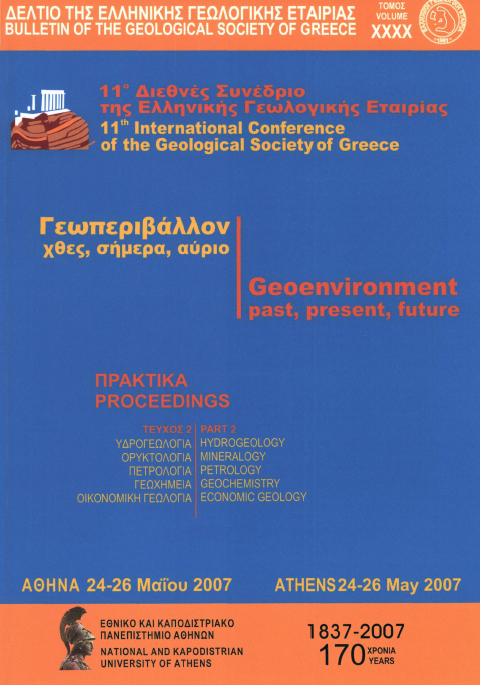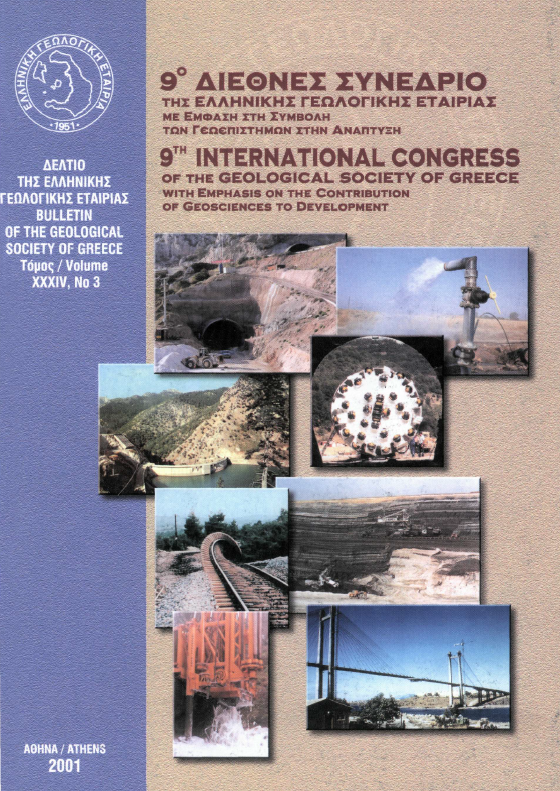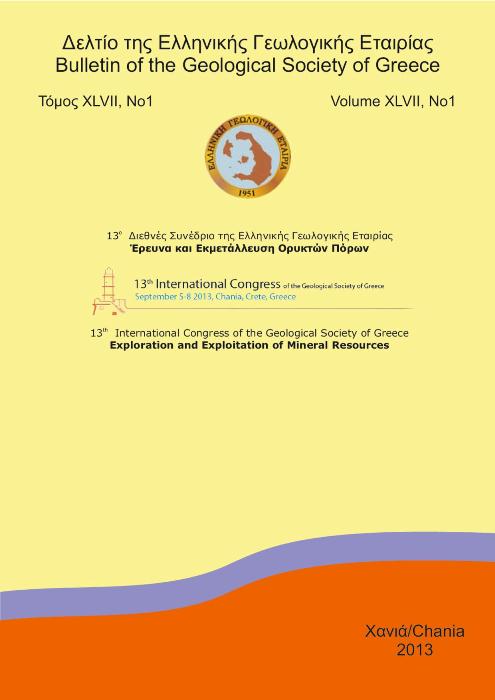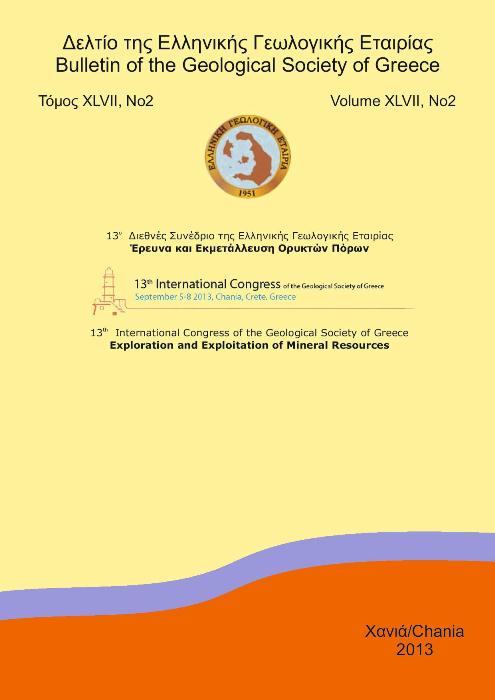MINERALOGICAL AND SPECTROSCOPIC STUDY OF NESQUEHONITE SYNTHESIZED BY REACTION OF GASEOUS CO2 WITH MG CHLORIDE SOLUTION
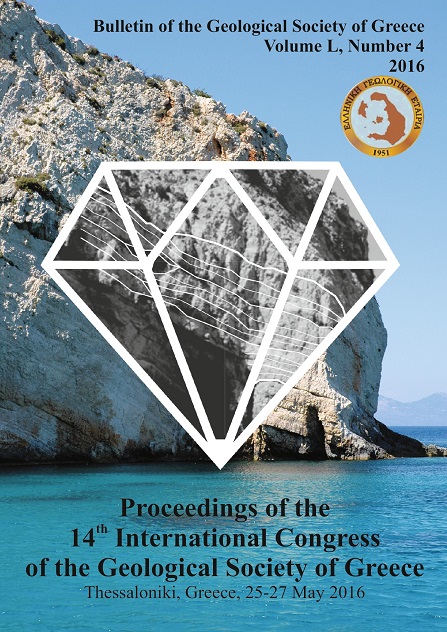
Abstract
Nesquehonite, a hydrous carbonate with promising uses such as building raw material and treatment of wastewaters, was synthesized under low pressure conditions by reaction of gaseous CO2 with Mg chloride solution and it was studied by means of X-Ray Diffraction, optical and scanning/transmission electron microscopy, and FTIR and Raman spectroscopic methods. Synthesized nesquehonite forms elongated fibers, exhibiting transparent to translucent diaphaneity and vitreous luster. It is characterized by high crystallinity. IR and Raman spectroscopy indicated the presence of OHand HCO3 - in the crystal structure of nesquehonite. The nesquehonite synthesis described herein constitutes a potential permanent storage of CO2 emissions.
Article Details
- How to Cite
-
Skliros, V., Anagnostopoulou, A., Tsakiridis, P., & Perraki, M. (2016). MINERALOGICAL AND SPECTROSCOPIC STUDY OF NESQUEHONITE SYNTHESIZED BY REACTION OF GASEOUS CO2 WITH MG CHLORIDE SOLUTION. Bulletin of the Geological Society of Greece, 50(4), 2009–2017. https://doi.org/10.12681/bgsg.11947
- Section
- Petrology and Mineralogy

This work is licensed under a Creative Commons Attribution-NonCommercial 4.0 International License.
Authors who publish with this journal agree to the following terms:
Authors retain copyright and grant the journal right of first publication with the work simultaneously licensed under a Creative Commons Attribution Non-Commercial License that allows others to share the work with an acknowledgement of the work's authorship and initial publication in this journal.
Authors are able to enter into separate, additional contractual arrangements for the non-exclusive distribution of the journal's published version of the work (e.g. post it to an institutional repository or publish it in a book), with an acknowledgement of its initial publication in this journal. Authors are permitted and encouraged to post their work online (preferably in institutional repositories or on their website) prior to and during the submission process, as it can lead to productive exchanges, as well as earlier and greater citation of published work.




